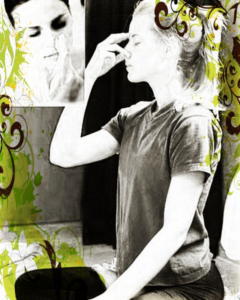Introduction
Pranayama, the ancient practice of breath control, has become a vital part of modern-day wellness routines. Originating from the rich traditions of yoga, Pránáyáma guides individuals to connect with their inner selves by controlling the rhythm and pattern of breathing. This blog is dedicated to exploring Pranayama, delving into its history, various techniques, and extensive health benefits. Whether you’re a beginner or someone already familiar with this practice, this comprehensive guide aims to deepen your understanding. With a particular focus on how to integrate pránáyáma into daily life, this blog will be your go-to resource to unlocking the breath of life. In an ever-stressful world, the relevance of pránáyáma for the general audience is more significant than ever, offering a path towards mental clarity and physical well-being.
Understanding Pránáyáma
Pránáyáma is more than a simple breathing exercise; it’s a profound and ancient practice that involves the control of prana, or the vital life energy. The term “Pránáyáma” can be broken down into two parts: “Prana,” which means life force, and “Yama,” meaning control. By understanding Pranayama, one grasps the significance of controlling this life force through conscious breathing.
Historically, Pranayama finds its roots in the age-old Indian tradition of yoga. Ancient texts such as the Yoga Sutras of Patanjali and the Bhagavad Gita mention this, emphasizing its significance in the journey toward spiritual enlightenment.
The science behind Pránáyáma is both fascinating and logical. When practiced correctly, Pranayama has the power to affect the autonomic nervous system, thereby influencing both physical and mental health. The techniques involve various ways of inhaling, holding the breath, and exhaling, each serving a unique purpose in regulating body functions. By controlling one’s breath, Pranayama enables the flow of oxygen and energy more efficiently throughout the body, enhancing overall vitality.
Different techniques of Pranayama have specific effects on the mind and body. For example, Anulom Vilom helps in cleansing and balancing, while Bhastrika invigorates and energizes.
Understanding Pranayama also includes recognizing its therapeutic value. Modern science has started to validate what ancient yogis knew: that Pranayama can be a powerful tool against stress, anxiety, and various ailments.
The Different Techniques of Pranayama
Pranayama encompasses a wide variety of techniques, each designed to achieve specific outcomes for both mental and physical well-being. Understanding these different techniques can guide individuals to choose the practices that best fit their needs and goals.
- Anulom Vilom (Alternate Nostril Breathing): This technique involves inhaling through one nostril, holding the breath, and then exhaling through the other nostril. Anulom Vilom is known to balance the right and left hemispheres of the brain, promoting mental clarity and relieving stress.
- Bhastrika (Bellows Breath): Bhastrika is a vigorous practice where both the inhale and exhale are forceful. This Pranayama technique enhances lung capacity, increases metabolic rate, and energizes the entire body.
- Kapalbhati (Skull Shining Breath): This technique involves a series of rapid exhales followed by passive inhales. Kapalbhati helps in cleansing the respiratory system, improving digestion, and stimulating the abdominal organs.
- Ujjayi (Ocean Breath): Ujjayi is characterized by a gentle sound produced at the back of the throat during breathing. This technique is calming and grounding, often used during yoga practice to link breath with movement.
- Sitali (Cooling Breath): By inhaling through a rolled tongue and exhaling through the nose, Sitali cools the body and calms the mind. It’s particularly beneficial during hot weather or when feeling overheated.
- Brahmari (Bee Breath): This involves inhaling deeply and then exhaling while making a humming bee-like sound. Brahmari is known to calm the mind, reduce anxiety, and improve concentration.
- Sheetali (Cooling Breath): Similar to Sitali, Sheetali involves inhaling through a curled tongue and is known to have cooling effects on the body. It helps in reducing stress and regulating blood pressure.
Proper guidance from experienced practitioners or teachers is highly recommended, especially when exploring new techniques.
Health Benefits of Pranayama
The practice of Pranayama goes beyond spiritual development and mental clarity; it also offers numerous health benefits that have been recognized and appreciated across various cultures. Here’s a detailed exploration of these benefits:
- Improved Respiratory Function: Regular practice of Pranayama enhances lung capacity and promotes more efficient breathing. Techniques like Anulom Vilom and Bhastrika can aid those with respiratory issues, making breathing smoother and more rhythmic.
- Stress Reduction: The calming effects of Pranayama on the nervous system are well-documented. Techniques such as Ujjayi and Brahmari help in reducing stress hormones, promoting relaxation, and enhancing overall mood.
- Heart Health: Pranayama’s role in improving cardiovascular health is significant. By controlling the breath and calming the mind, it aids in lowering blood pressure and reducing the risk of heart-related ailments.
- Digestive System Support: Practices like Kapalbhati stimulate the abdominal organs and improve digestion. They help in cleansing the system and can be beneficial for those dealing with digestive disorders.
- Improved Sleep Quality: Through relaxation and mental tranquility, Pránáyáma facilitates better sleep. Techniques that calm the mind can be especially helpful for those struggling with insomnia or irregular sleep patterns.
- Enhanced Concentration and Mental Clarity: Regular practice of Pránáyáma sharpens the mind, improves focus, and enhances cognitive functions. Whether it’s in studies, work, or daily life, these benefits translate into better performance and decision-making.
- Emotional Balance: Pranayama has profound effects on emotional health. It helps in managing anxiety, depression, and emotional imbalances by creating a sense of inner peace and stability.
- Boosting Immunity: By regulating the nervous system and improving overall bodily functions, Pranayama strengthens the immune system. This makes the body more resilient against common illnesses and infections.
Pranayama for Beginners – A Step-by-Step Guide
Embarking on the journey of Pranayama can be both exciting and transformative. Here’s a detailed guide to get started with Pranayama:
- Understanding the Importance of Breath:
Before diving into specific techniques, it’s essential to appreciate the breath’s significance. Breath is our life force, and Pranayama teaches us to control and harness it. - Choosing the Right Environment:
Select a calm, quiet space where you won’t be disturbed. It should be well-ventilated but free from drafts. Sitting on a cushion or chair that allows a straight spine will enable proper breathing. - Starting with Basic Techniques:
Techniques like Anulom Vilom (Alternate Nostril Breathing) or Brahmari (Bee Breath) are excellent starting points as they’re simple to learn and offer immediate relaxation benefits. - Proper Posture and Alignment:
Sit with a straight spine and relaxed shoulders. Place hands on knees, with palms facing upward or in a mudra (hand gesture) if desired. Focus on maintaining this alignment throughout your practice. - Focusing on the Breath:
Begin by observing your natural breathing pattern. Notice the inhalation, the exhalation, and the pause between. This awareness is fundamental to Pranayama. - Avoiding Common Mistakes:
Forcing the breath, straining, or practicing in a noisy or disruptive environment can hinder your progress. Awareness and gentle self-correction can help you avoid these common pitfalls. - Consulting with a Qualified Teacher:
If possible, seeking guidance from a qualified Pranayama or yoga teacher can be incredibly beneficial. They can tailor practices to your unique needs and ensure proper technique. - Practicing Patience and Mindfulness: Pranayama is not just about the physical act of breathing; it’s a meditative practice that requires patience, focus, and mindfulness. Embrace the journey without rushing the process.
The Integration of Pranayama into Daily Life
Here’s a comprehensive guide on how to weave Pranayama into the fabric of daily life:
- Morning Routine: Starting the day with a simple Pranayama practice, like Anulom Vilom, can set a positive and calm tone. Even a few minutes can make a difference in how you approach the day.
- Mindful Commuting: Whether driving or on public transport, focusing on your breath, and practicing gentle breath control can transform commute time into a moment of mindfulness and relaxation.
- Workplace Wellness: Implementing brief Pranayama breaks during work hours, such as Brahmari for stress relief, can boost concentration and alleviate work-related tensions.
- Pre-Meal Practice: A few calming breaths before meals can improve digestion and enhance the eating experience. Ujjayi or ocean breath is an excellent choice for this purpose.
- Physical Exercise Integration: Combining Pranayama with physical exercise, such as walking or jogging, promotes better breathing efficiency and adds a meditative quality to the activity.
- Evening Wind-Down: Incorporating Pranayama into your nighttime routine, such as Sitali for cooling down, prepares the body and mind for a restful sleep.
- Emotional Regulation: Utilizing Pranayama techniques during emotional highs or lows helps in maintaining emotional balance. Simple deep breaths can be an immediate remedy for stress or anxiety.
- Family and Social Connections: Sharing the practice of Pranayama with family and friends fosters connection and mutual growth. It can become a bonding activity that enhances relationships.
- Education and Learning: Teaching children and young adults about Pranayama can sow the seeds for a healthy future. Schools and educational institutions are increasingly recognizing its value.
- Community Involvement: Joining or creating community groups focused on Pranayama fosters a sense of belonging and encourages regular practice.
- Creating a Pranayama Sanctuary at Home: Designating a specific spot in your home for Pranayama practice creates a welcoming space that invites regular practice.
Conclusion
The exploration of Pranayama opens a door to a world rich in potential for physical, mental, and spiritual growth. Its practice transcends age, lifestyle, or belief systems, offering universal benefits. From understanding the different techniques of Pranayama to recognizing its extensive health benefits, from guiding beginners on their journey to emphasizing the seamless integration into daily life, pránáyáma stands as a testament to human resilience and the power of self-control. It serves as a constant reminder that within our breath lies the essence of life, a tool we can master for better living. In embracing Pranayama, we tap into an age-old wisdom that nurtures the soul, enriches the body, and quiets the mind. It is not just a practice; it’s a pathway to a more mindful, harmonious existence.
FAQs
- What is Pranayama?
- Pranayama is an ancient yogic practice that involves controlling the breath to enhance physical, mental, and spiritual well-being. It includes various techniques that influence the flow of energy in the body, leading to improved health and mindfulness.
- How Can I Start Practicing Pranayama?
- Beginners can start with simple techniques like Anulom Vilom or Brahmari. Finding a quiet space, focusing on posture, and following guided instructions from reputable sources are essential steps. For personalized guidance, consulting a qualified teacher is recommended.
- Can Pranayama Help in Reducing Stress?
- Yes, Pranayama is renowned for its calming effects on the nervous system. Techniques like Ujjayi help reduce stress hormones, promoting relaxation and enhancing overall mood.
- Is Pranayama Safe for Everyone?
- While Pranayama is generally safe, some techniques may not be suitable for individuals with certain health conditions. It’s advisable to consult with a healthcare provider or experienced teacher before beginning practice.
- What Are the Main Health Benefits of Pranayama?
- Answer: Pranayama offers a wide array of health benefits, including improved respiratory function, stress reduction, enhanced heart health, digestive system support, improved sleep quality, emotional balance, and boosting immunity.
- How Can I Integrate Pranayama into My Daily Life?
- Integrating Pranayama into daily life can be done through morning routines, mindful commuting, workplace wellness, pre-meal practice, physical exercise integration, and more. The practice’s versatility allows it to fit seamlessly into various daily activities.
- Are There Different Techniques in Pranayama?
- Yes, there are various techniques in Pranayama, each serving different purposes. Examples include Anulom Vilom for balance, Bhastrika for energizing, Brahmari for calming, and Kapalbhati for cleansing.
- Can Children Practice Pranayama?
- Absolutely, children can benefit from Pranayama as it can enhance concentration, reduce stress, and improve overall well-being. It’s advisable to start with simple techniques and possibly under the guidance of an experienced teacher.



